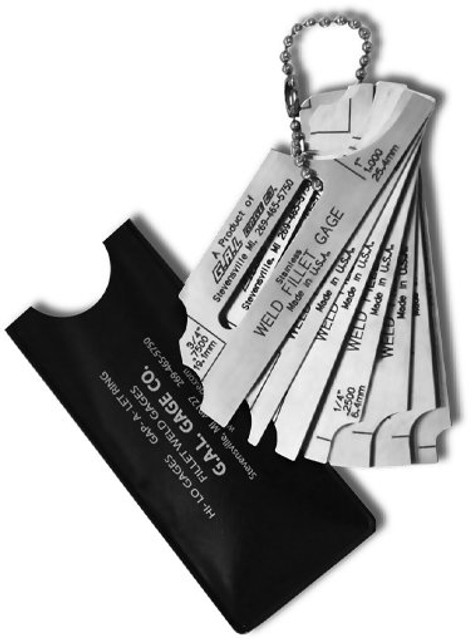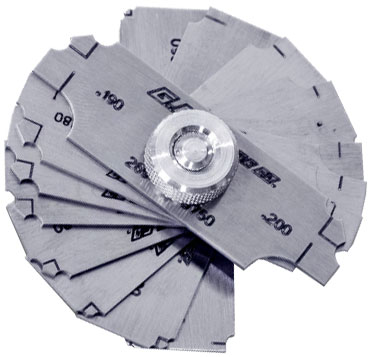Understanding Gauge Fillet Weld: A Comprehensive Overview for Welders
Understanding Gauge Fillet Weld: A Comprehensive Overview for Welders
Blog Article
Fillet Weld Layout Techniques: Enhancing Joint Efficiency and Looks for Structural Integrity
In the realm of structural engineering and construction, the significance of fillet weld layout methods can not be overstated. By meticulously thinking about elements such as weld profile optimization, material selection, joint prep work methods, welding procedure performance, and aesthetic improvement producers, designers and approaches can attain an unified balance in between performance and look in their welded frameworks.
Weld Profile Optimization


Attaining an optimum weld account includes a meticulous factor to consider of factors such as material density, joint setup, welding setting, and wanted welding speed. Furthermore, the choice of suitable welding specifications, such as voltage, current, and take a trip speed, is fundamental in controlling the shape and measurements of the fillet weld. Utilizing sophisticated welding strategies, such as pulse welding or robotic welding, can better fine-tune the weld account to fulfill particular layout requirements and high quality criteria.
Basically, weld profile optimization is a basic facet of fillet weld layout that straight influences the general performance and integrity of bonded joints in architectural applications.
Material Choice Considerations
When taking into consideration material selection for fillet weld layout, the compatibility of the base metals is a vital factor influencing the architectural integrity of the joint. It is essential to choose products that not only bonded together efficiently yet additionally possess comparable mechanical residential properties to guarantee the lots is evenly distributed in between the base and the weld steels. Welding products with greatly different properties can cause issues such as stress and anxiety focus, premature joint failure, or fracturing.
In addition, the setting in which the bonded structure will certainly operate need to be taken into consideration when choosing products. Variables like corrosion resistance, temperature variations, and direct exposure to chemicals can all affect the longevity and performance of the weld joint. By picking materials that are suitable for the intended application and setting, the general toughness and integrity of the welded joint can be dramatically improved.
Consequently, complete factor to consider of material compatibility and ecological aspects is critical in making certain the weld joint's stamina, sturdiness, and general architectural stability.

Joint Preparation Strategies
Considering the crucial function material selection plays in ensuring the architectural stability of fillet weld joints, it is essential to carry out exact joint prep work strategies that maximize the connection in between the base metals. Joint preparation is an essential action that directly affects the quality and strength of the weld. One essential technique is the cleansing of base metals to get rid of any impurities like rust, oil, or paint that can endanger the weld's honesty. This can be achieved via methods such as grinding, wire cleaning, or chemical cleansing.
Additionally, tack welding the parts in area before the last weld assists preserve alignment and minimizes distortion during the welding process. By carefully adhering to these joint this website preparation strategies, welders can improve the overall efficiency and visual appeals of fillet weld joints while making sure structural sturdiness.
Welding Process Effectiveness
Reliable welding processes are necessary for accomplishing optimum efficiency and high quality in fillet weld manufacture. One vital element of enhancing welding procedure performance is picking the suitable welding strategy. Aspects such as material type, joint design, and welding placement need to be carefully thought about to figure out the most ideal method. For circumstances, procedures like gas steel arc welding (GMAW) and flux-cored arc welding (FCAW) are generally used for fillet welds because of their versatility and rate (Gauge Fillet Weld).
Moreover, ensuring correct tools setup and upkeep is vital for reliable welding. Normal calibration of welding machines, assessment of consumables, and maintenance of welding torches can avoid downtime and revamp, ultimately conserving time and resources. Furthermore, employing experienced welders with knowledge in the certain welding procedure being utilized can considerably impact efficiency. Trained welders are more proficient at readjusting criteria, repairing concerns, and maintaining consistent weld top quality.
Visual Improvement Approaches
To enhance the quality of fillet weld manufacture, carrying out aesthetic enhancement techniques can play an essential role in making sure accuracy and precision throughout the welding process. Aesthetic improvement approaches include numerous methods intended at boosting the appearance and top quality of fillet welds. One typical approach is using back purging systems to remove oxidation on the backside of the weld, resulting in a cleaner, extra visually pleasing additional resources coating. Additionally, using proper lights arrangements in the welding location can enhance exposure, allowing welders to monitor the weld pool and make certain consistent bead formation. Aesthetic help such as weld size evaluates and multiplying lenses can assist in evaluating weld accounts and measurements accurately. The usage of contrasting marking products or short-lived tacking can assist in lining up and placing the work surfaces specifically before welding. By incorporating these aesthetic enhancement approaches right into the welding procedure, welders can attain not only structurally audio fillet welds but additionally aesthetically enticing outcomes that fulfill market requirements.

Verdict
Finally, enhancing fillet weld style includes cautious factor to consider of weld profile, material selection, joint preparation, welding procedure performance, and aesthetic improvement methods. By applying these approaches, architectural stability can be boosted while additionally accomplishing aesthetic allure. It is important to focus on both efficiency and aesthetics in fillet weld design to ensure the overall top quality and durability of the joint.
By carefully considering factors such as weld account optimization, product option, joint preparation techniques, welding procedure performance, and visual enhancement producers, engineers and approaches can achieve an unified balance in between functionality and look in their welded structures.In the realm of fillet weld layout, enhancing the weld other account plays an important role in ensuring architectural integrity and efficiency. The weld account, which includes the size and shape of the weld cross-section, directly influences the circulation of stress and load-bearing ability within the joint. It is vital to choose products that not only weld together efficiently but additionally possess comparable mechanical residential or commercial properties to make sure the lots is equally dispersed between the weld and the base metals - Gauge Fillet Weld.In conclusion, maximizing fillet weld design includes cautious consideration of weld account, product selection, joint prep work, welding process efficiency, and aesthetic improvement techniques
Report this page